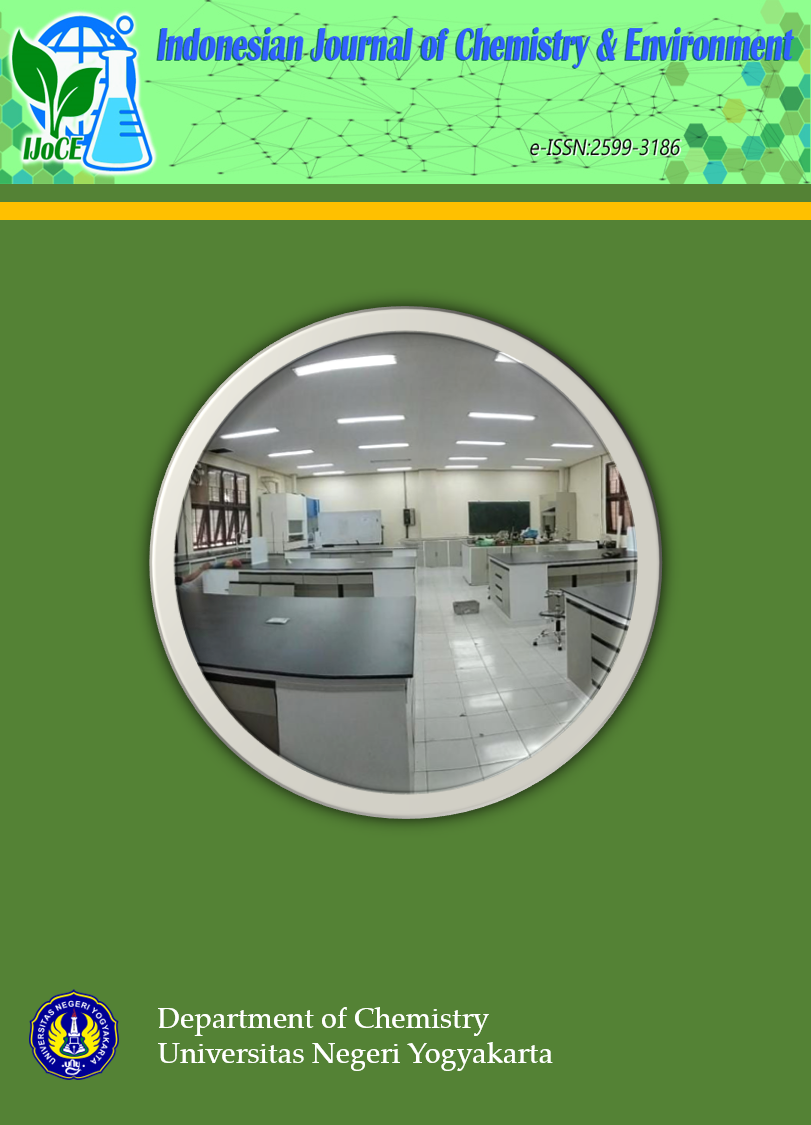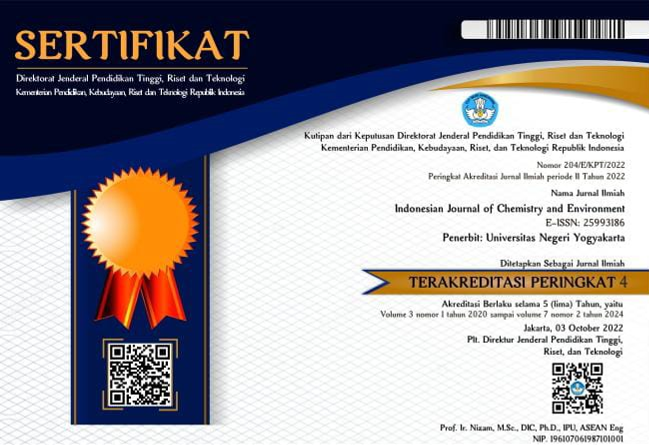Synthesis of Film Cellulose-Glycerol-Cloves Oil as Chili Packaging
DOI:
https://doi.org/10.21831/ijoce.v6i1.61502Abstract
The aim of this research is to know the utilization of cellulose film with the addition of glycerol and clove oil in various variations as the best chilli packer based on mechanical properties, surface photo, water resistance test, and its effectiveness to extend the life of chilli. The production of cellulose film as packaging in this research is done by using coating method. In the coating method, variations of glycerol and clove oil were added in the ratio of (3: 1), (5: 1), (7: 1), (10: 1), and (15: 1) (v / v). The synthesized cellulose film will be characterized by functional group analysis using FTIR-ATR, mechanical test using Tensile strength, surface photo using optical microscope, cellulose film resistance test to water, and effectiveness test as chili packaging. FS Gli: Ck (3: 1) is a cellulose film with variations in the addition of glycerol and the best clove oil which has a tensile strength of 12.193 MPa, elongation of 9.761%, the most homogeneous surface photo, the greatest water resistance value 42,87, and effectiveness best cellulose film as a chilli packer.
Downloads
Published
2023-06-07
How to Cite
[1]
Laksono, E.W. and Halimah, P.N. 2023. Synthesis of Film Cellulose-Glycerol-Cloves Oil as Chili Packaging. Indonesian Journal of Chemistry and Environment. 6, 1 (Jun. 2023), 29–35. DOI:https://doi.org/10.21831/ijoce.v6i1.61502.
Issue
Section
Articles
Citation Check
License
Authors who publish with this journal agree to the following terms:
- Authors retain copyright under a Creative Commons Attribution–ShareAlike License (CC BY SA) that allows others to share: copy, and redistribute the material in any medium or format, Adapt: remix, transform, and build upon the material, for any purpose, even commercially.
- Authors are able to enter into separate, additional contractual arrangements for the non-exclusive distribution of the journal's published version of the work (e.g., post it to an institutional repository or publish it in a book), with an acknowledgement of its initial publication in this journal.
- Authors are permitted and encouraged to post their work online (e.g., in institutional repositories or on their website) prior to and during the submission process, as it can lead to productive exchanges, as well as earlier and greater citation of published work.










